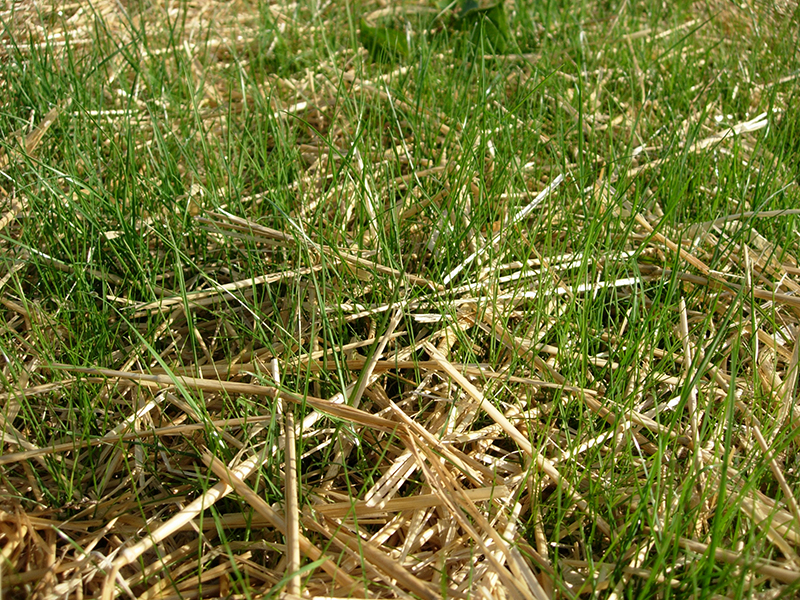picture of the week
January 31, 2022
Spring Seeding Lawns: Is it Really the Best Option?
John Orick, Purdue Master Gardener State Coordinator, Department of Horticulture and Landscape Architecture
With spring weather approaching in a couple months, homeowners may be thinking about reseeding thin or damaged areas in their lawns once spring weather arrives. August 15 – September 15 is still the best time to seed cool-season turfgrasses in the northern half of Indiana while September 1 – 30 is best for seeding in the southern half of the state. Seeding turf areas in spring is often not as successful as seeding in the late-summer due to crabgrass competition with new turfgrass seedlings, the need for soil temperatures to increase for adequate turfgrass seed germination, and excess soil moisture making it challenging to prepare the soil for adequate seed germination. Although not ideal, some homeowners or turf managers may choose to seed cool-season grasses in spring to establish lawns around newly constructed homes, provide soil erosion protection on sloped areas, or correct thin turf areas due to winter damage.
 Newly seeded turfgrass area.
(Photo by Mary Welch-Keesey)
Newly seeded turfgrass area.
(Photo by Mary Welch-Keesey) When seeding a turf area in the spring, consider the following:
- Seed before the soil thaws in winter. This is a "dormant seeding" and can be done in Indiana from late November to March depending on your location in the state. The freezing and thawing of the soil increases "seed-soil contact" and may help germination of seed when temperatures increase as spring progresses.
- If "dormant seeding" is not possible, seed as early in the spring as possible to improve the competition of the new seedlings with crabgrass and other weeds which may germinate at this time.
- Prepare the soil for seeding to maximize "seed-soil contact" and germination. Consider preparing the soil in late fall when soil conditions are right for cultivation with the plan to "dormant seed" the thinned turf area.
- Water newly seeded areas as needed when growing conditions favor germination.
- Ask, can the reseeding project wait until the more effective late-summer seeding window?
- Evaluate whether establishment by sod would be more suitable option for the damaged areas instead of seeding in spring? (see AY-28-W for information on sod establishment)
Related articles and publications:
Establishing Turfgrass Areas from Seed (AY-3-W)
https://www.extension.purdue.edu/extmedia/AY/AY-3-W.pdf
Seeding a Turf Area in the Spring (AY-20-W)
https://www.extension.purdue.edu/extmedia/AY/AY-20-W.pdf
Purchasing Quality Grass Seed for Your Lawn (AY-25-W)
https://www.extension.purdue.edu/extmedia/AY/AY-25-W.pdf
Establishing a Lawn from Sod (AY-28-W)
https://www.extension.purdue.edu/extmedia/AY/AY-28-W.pdf
See another article by clicking the image below:
Fine Fescue: The Future of Low Input Grass?


